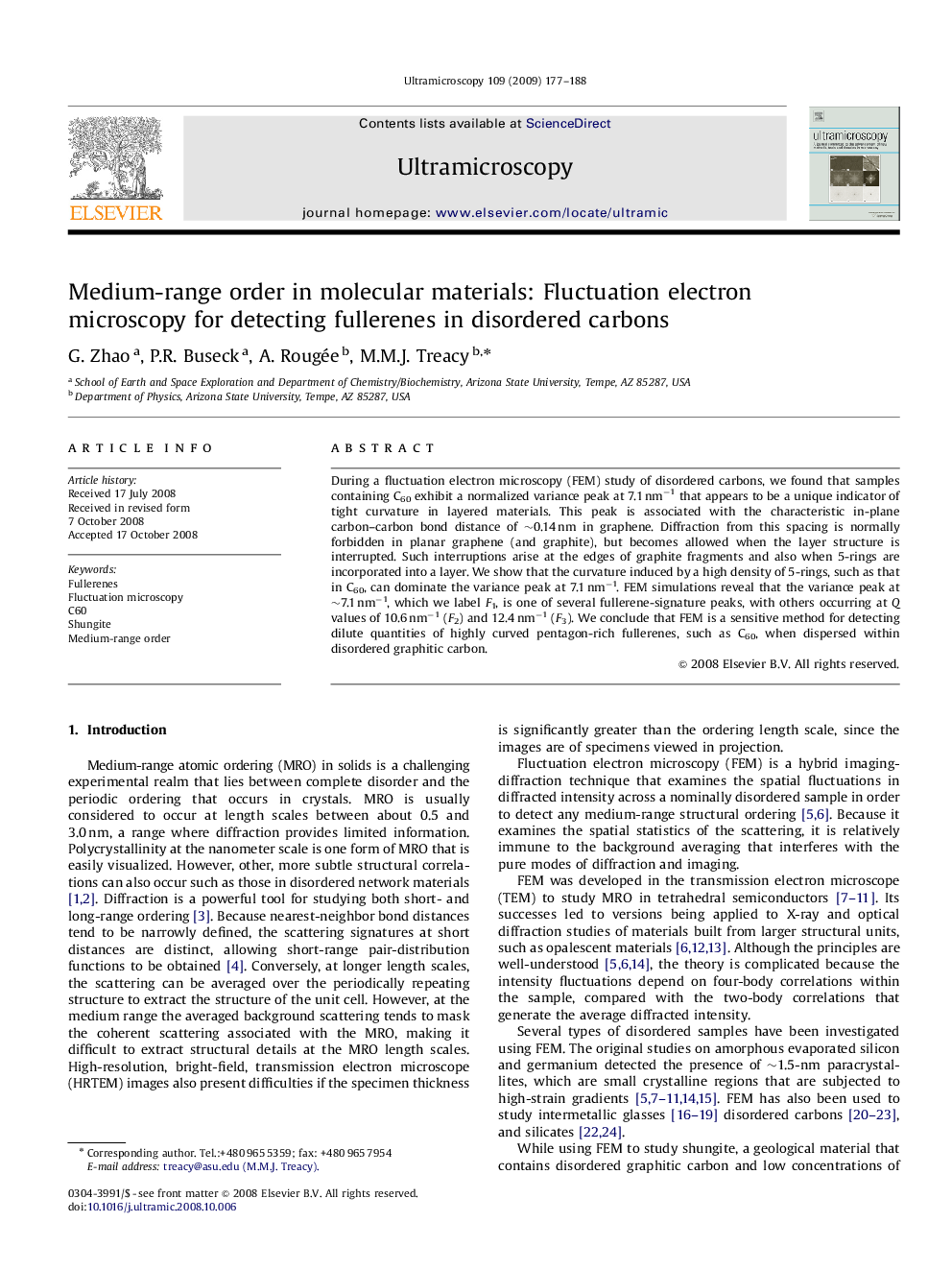| Article ID | Journal | Published Year | Pages | File Type |
|---|---|---|---|---|
| 1678865 | Ultramicroscopy | 2009 | 12 Pages |
Abstract
During a fluctuation electron microscopy (FEM) study of disordered carbons, we found that samples containing C60 exhibit a normalized variance peak at 7.1Â nmâ1 that appears to be a unique indicator of tight curvature in layered materials. This peak is associated with the characteristic in-plane carbon-carbon bond distance of â¼0.14Â nm in graphene. Diffraction from this spacing is normally forbidden in planar graphene (and graphite), but becomes allowed when the layer structure is interrupted. Such interruptions arise at the edges of graphite fragments and also when 5-rings are incorporated into a layer. We show that the curvature induced by a high density of 5-rings, such as that in C60, can dominate the variance peak at 7.1Â nmâ1. FEM simulations reveal that the variance peak at â¼7.1Â nmâ1, which we label F1, is one of several fullerene-signature peaks, with others occurring at Q values of 10.6Â nmâ1 (F2) and 12.4Â nmâ1 (F3). We conclude that FEM is a sensitive method for detecting dilute quantities of highly curved pentagon-rich fullerenes, such as C60, when dispersed within disordered graphitic carbon.
Related Topics
Physical Sciences and Engineering
Materials Science
Nanotechnology
Authors
G. Zhao, P.R. Buseck, A. Rougée, M.M.J. Treacy,
